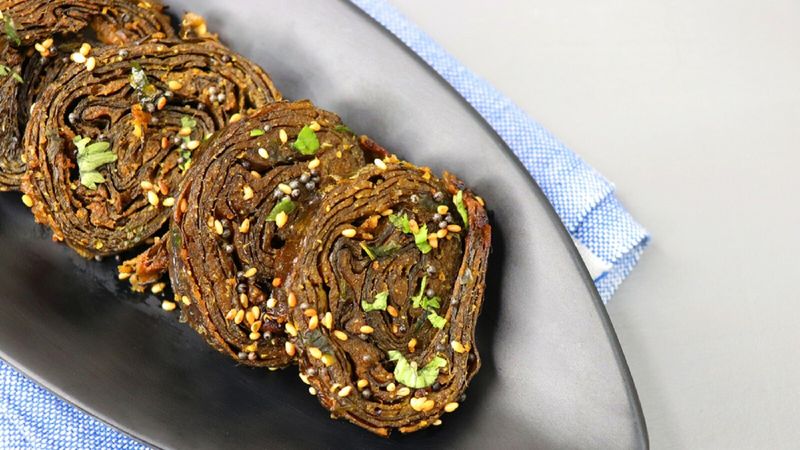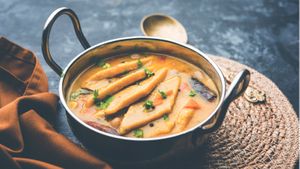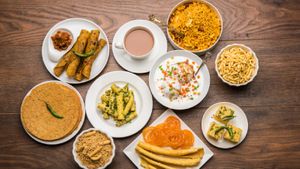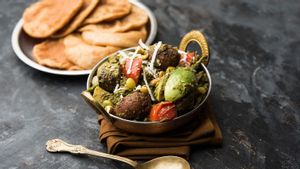The very famous Gujarati cuisine in India is highly regarded for its wholesome nutritious food option. Gujarat's diverse culinary legacy is particularly noteworthy, since it features a sophisticated fusion of spices, textures, and flavours. The delicious meal known as Gujarati Patra, which tantalises the taste senses and carries the tradition of generations, is one example of a culinary masterpiece that embodies Gujarat.
Known by many as Patra Roll or Alu Vadi, Gujarati Patra is more than simply a food; it's a treasured custom that has been passed down through the ages. This tasty treat has gastronomic and cultural value, and it is rooted in Gujarati tradition. Culinary skill and a keen sense of flavour are combined in an exquisite preparation process.
The history of Gujarati Patra

The history of Patra extends over several centuries, deeply ingrained in the gastronomic customs of Gujarat and Maharashtra. Cooks used their inventiveness and ingenuity to develop a dish that was not only flavorful but also had a longer shelf life by experimenting with locally available ingredients. The base was made of colocasia leaves, which are plentiful in these areas and were selected for their substantial size and sturdy texture, which made them a perfect medium for the delicate layering technique.
Ingredients required to prepare Gujarati Patra
- Colocasia Leaves (Arbi ke patte)
- Gram Flour
- Garam Masala
- Mustard Seeds
- Sesame Seeds
- Turmeric
- Asafoetida
- Jaggery
- Tamarind or lemon
- Salt
- Vegetable Oil
How to prepare authentic Gujarati Patra

Colocasia leaves (Arbi ke patte) are layered with spicy gram flour paste, rolled into secure cylinders, and either steamed or shallow-fried to create this meal. When the patra is cooked and split into rounds, the spiral pattern becomes evident, which is very stunning. The dish has a perfect harmony of sweetness from the jaggery, tanginess from the tamarind or lemon, and a blend of spices that give the layers a seductive depth. Using colocasia leaves not only adds a distinct earthy flavour, but it also demonstrates how creatively chefs can use these leaves to create a delicious and eye-catching treat.
Gujarati Patra is typically eaten as a snack or appetiser and is frequently served with a sour chutney consisting of yoghurt, mint, and coriander. The rolls' warmth is complemented by the chutney's chilly quality, which elevates the whole eating experience.
Follow this step by step recipe to make delicious Gujarati Patra
Preparation of Patra Leaves
- Wash the colocasia leaves thoroughly.
- Trim the thick veins from the back of the leaves.
- With the back of a knife, gently flatten the leaves.
Prepare Gram Flour Mixture
- In a bowl, mix besan, tamarind pulp, jaggery, ginger paste, green chili paste, sesame seeds, turmeric powder, red chili powder, coriander powder, salt, and 2 tbsp oil.
- Add water gradually to form a smooth, lump-free batter.
Apply Gram Flour Mixture on Leaves
- Place a colocasia leaf on a clean surface.
- Spread a thin layer of the besan mixture evenly on the leaf.
- Place another leaf on top and repeat the process. Continue layering until all leaves are coated.
- Carefully roll the layered leaves into a tight cylindrical shape.
Steaming
- Place the rolled patra in a steamer and steam for 20-25 minutes until firm.
- Allow it to cool, then slice into rounds.
Tempering
- Heat oil in a pan, add mustard seeds, sesame seeds, asafoetida, and curry leaves.
- Allow the mustard seeds to splutter, and the sesame seeds to turn golden brown.
- Now fry until the slices turn golden brown and crisp on both sides.
- Lastly, garnish with chopped coriander leaves and serve hot with green chutney or tamarind sauce.


_1701077549721_thumb_1200.jpeg?w=3840&q=75)



